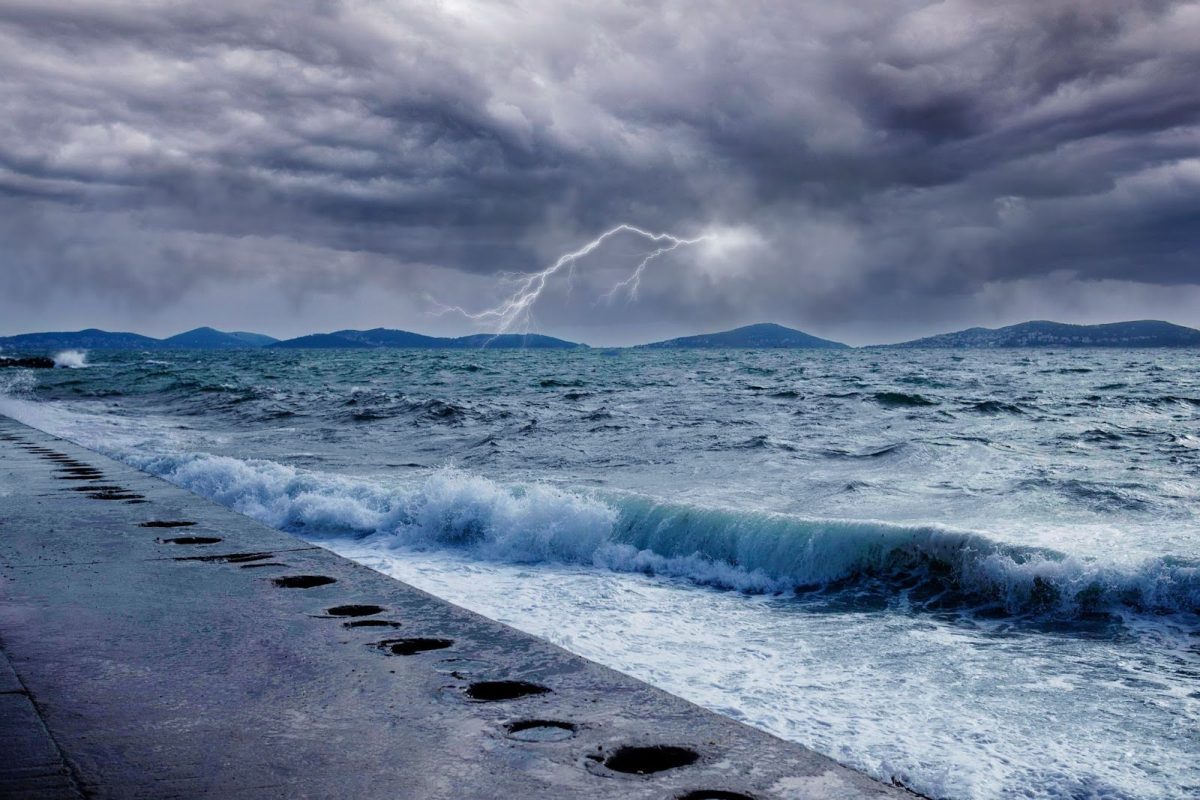
The hurricane caused flooding and waves up to 20 feet high to crash onto the US east coast without even making landfall. (Freepik)
Hurricane Erin was a large hurricane that formed from a tropical wave on the West Coast of Africa and continued to gain strength and size as it crossed the Atlantic Ocean before forming into a tropical storm near Cape Verde on August 11. The hurricane began a sequence of rapid intensification of the storm on August 15. The storm peaked at a category five on August 16 and weakened to a category three and then rapidly jumped to a category four on August 19. Finally, it became a Category two on August 21.
Hurricane Erin was abnormally large, causing damage to land while being hundreds of miles away.
The hurricane began to grow significantly and dumped large amounts of rainwater on surrounding islands and coastlines, although it never touched land. At its largest, the hurricane sent tropical storm-level winds that reached 480 miles out and hurricane-level wind speeds that reached 150 miles out from the eye. The hurricane has been a big deal since it is the first big tropical storm to reach hurricane strength this season. Hurricane Erin previously made appearances in 1989, 1995, and 2001. Hurricane Erin formed when a tropical depression (with winds less than 39 mph) developed into a powerful weather system on August 11th, with wind speeds exceeding 39 miles per hour that gained strength as it traveled across the Atlantic Ocean, reaching wind speeds of 70 to 74 mph, officially giving it a place in the records as a hurricane. Hurricane Erin got its name from a list of names that is reused every few years and is given to a storm that caused major property damage or death.
The hurricane was responsible for nine deaths before it even became a major named storm, and killed about 249 people in total. The storm impacted the United States coastlines by producing dangerous rip currents and waves. According to the North Carolina state climate office, the hurricane brought more wind than it did rain, and the wind reached up to 51 mph on the coast, which caused large waves that reached 15 to 20 feet high.
Although the hurricane had about a zero percent chance of making landfall and was several hundred miles off shore from the mainland, it caused damage and flooding to coastal regions, with large waves forming up to 20 feet tall, and dangerous currents that caused the deaths of two swimmers off of the US coast along with the deaths of many others that were an indirect cause of the storm.
One swimmer who was affected by the hurricane was a 17-year-old boy who was swept away by a rip current in New Hampshire on August 24.
According to witnesses, the boy had been pulled out to sea by the strong current, and there were no lifeguards on duty at the time, so the boy’s father went out to save him, but he was taken by the current as well. Once the lifeguards got there and retrieved them from the water, they were both taken to the hospital, where the boy tragically passed away.
Another case, Ishmolie Mohammad, a 59-year-old swimmer, drowned off the shore of New York. He was swimming in the ocean when he got caught in the current, and by the time he was rescued and airlifted to the hospital, he was pronounced dead.
Hurricane Erin caused an estimated over $1 million (USD) in damages to the US coastline, Canadian coastline, Cape Verde, the coast of Puerto Rico, and the US Virgin Islands.